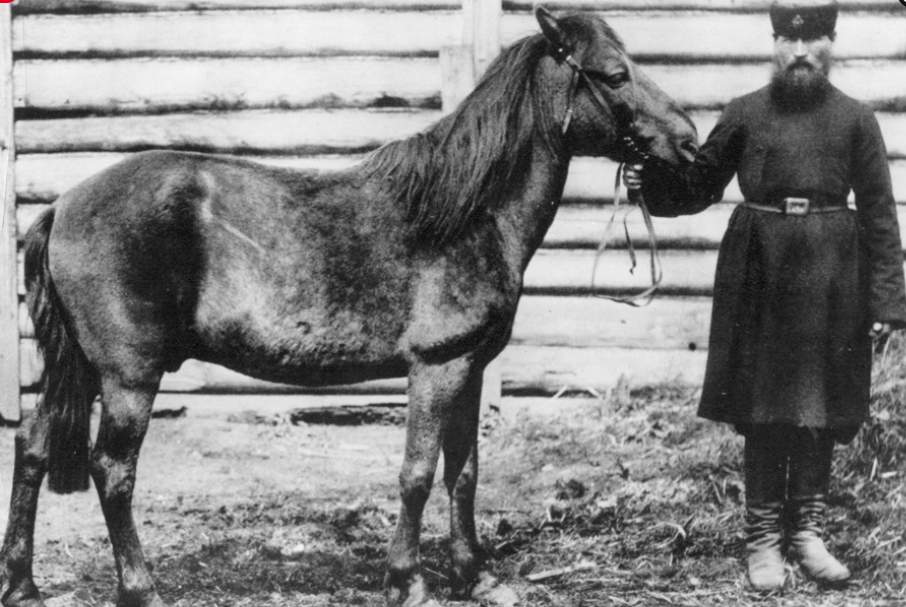Tarpans were herd animals and grazers like other horses. Tarpans live in herds, like many other fleet-footed animals. Where did these first domestic horses come from? In what way did they live, where did they come from, and what were their origins? Tarpans are widely believed to have been the ancestors of modern horses.
It may come as a surprise to learn that domesticating the horse was one of the most significant events in human history. In spite of its seemingly insignificant nature, this event forever changed the course of our lives. Through it, our ancestors were able to travel quickly over long distances. Through the tenacity and strength of these animals, they were able to accomplish tasks that previously required several men. The horse’s skin, bones, and sinews also provided sustenance after its useful life had ended, and its flesh provided nourishment as well.
Compared to a modern Thoroughbred racehorse, this sturdy horse measured only 1.5 meters at the shoulder. Even though the tarpan was small, it was resilient and strong. Due to its Asian steppe habitat, it has survived harsh conditions that sometimes sweep over these treeless plains. During the winter, its grayish-brown coat grew long to protect it from the cold.

There is a possibility that the tarpan was white in some northern regions of its range. There were often white horses found in the deep permafrost of Siberia by ivory hunters searching for mammoth tusks. A bog may have ended the lives of these white tarpans. As the earth entered another glaciation, they became encased in ice.
Asian steppes were once inhabited by a wide variety of predators, many of which were capable of capturing and subduing large animals such as tarpans. Tarpan’s predators died off one by one, leaving only the wolf, the occasional bear, and humans. Tarpans were described as spirited animals capable of kicking and biting in defense of themselves.
The tarpan was killed by driving herds of them off cliffs, a surefire way to kill a lot of them quickly. Throughout Europe, cave paintings depict horses. A primitive innovator probably thought it would be an excellent idea to tame the tarpan and its relatives after hunting them for a long time.
As horses have excellent hearing and smell, hunting these animals on the steppes must have been challenging, as they sense danger way before they can see it. A tame tarpan made hunting much easier after domestication. As the species began its slow, inexorable decline, its extinction became inevitable. This species was not primarily affected by hunting.
People began taking more tarpans from the wild as they learned of its usefulness. To supplement the young reared by the same individuals, this was done. Domesticated tarpans became more common. Through selective breeding, their distinctive characteristics, such as aggression and spiritedness, were filtered out. Horses were more like these animals than tarpans.
Due to its ability to mate with these domesticated horses, the tarpan’s unique genes were diluted. In the mid-19th century, purebred tarpans were becoming rare. There had been some tarpans kept on noble estates for years before the last wild one was killed in 1879. Neglect led to the demise of these captive animals, and the last one died in Poland in 1887.
In the decades following the extinction of the tarpan, domesticated horses spread throughout the world, as human explorers took them wherever they went. A number of ponies with tarpan characteristics were collected by the Polish government in a futile attempt to resurrect the tarpan.
Forest reserves were set up for them in place of their peasant owners. Since the ponies they chose were millennia-old selective breeds, this exercise was pointless. No more than a German Shepherd dog is a purebred wolf, they were not purebred tarpans. German scientists turned their attention to reviving the tarpan through selective breeding after thinking they could resurrect the aurochs. Because nobody knew what a tarpan looks like genetically, this notion was without merit.
There are two types of horses produced as a result of these partial resurrection attempts, the Konik of Poland and the Heck of Germany. There is a superficial resemblance between these horses and tarpans. It’s not a simple case of a species going extinct that makes the story of the tarpan so interesting. We developed something quite distinct when we molded the tarpan to fit our own needs, as a result of our desire to produce an animal we could use.
There is no longer a tarpan in a form our ancestors recognize, but its genes are found in nearly all horses. Scientists have been piecing together the story of horse evolution for a long time, and they now have several significant pieces. In North America, the first clear ancestor of the horse, Hyracotherium, evolved around 10 million years ago.
The animal was about the size of a fox, with four of its five digits in contact with the ground, and adaptations for running were evident, such as long, thin legs. The primitive horse gradually evolved into the modern horse over millennia. As a result of having only one digit in contact with the ground, they were fast-moving animals of the plains.
Did it become extinct at a certain point in time? It is believed that the last purebred tarpan died in 1887.
In what part of the world did it live? Tarpans were native to the steppes of central Asia.
Only Przewalski’s horse, a sturdy, pony-sized animal that roams Mongolia’s wilderness today, is a true wild horse. Almost lost to extinction, this horse has been bred and reintroduced into the wild thanks to captive specimens.
Scientific name: Equus ferus
Phylum: Chordata
Class: Mammalia
Order: Perissodactyla
Family: Equidae
Read More – The Domestication of the Horse
